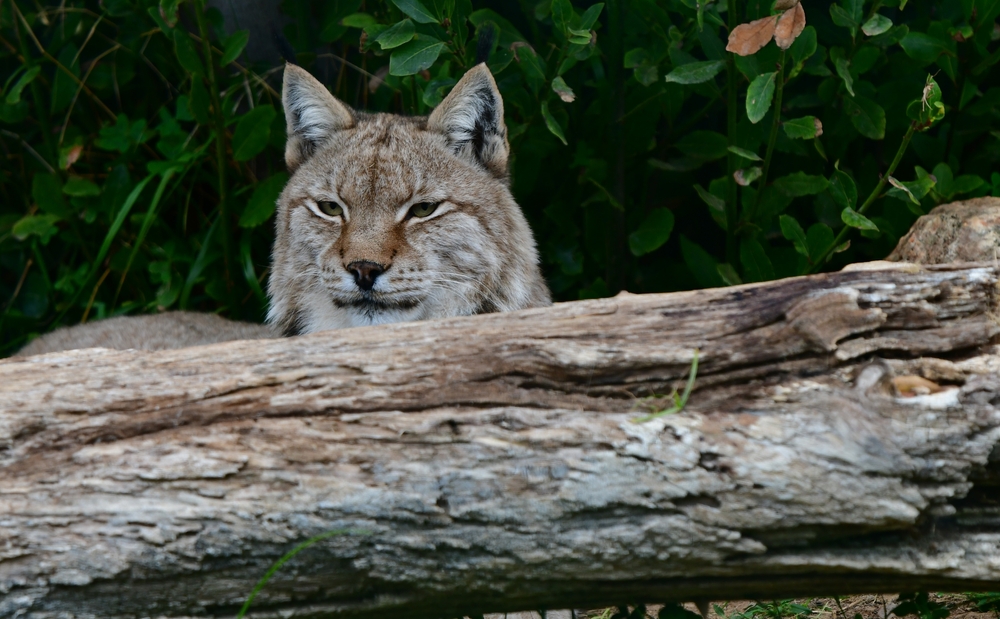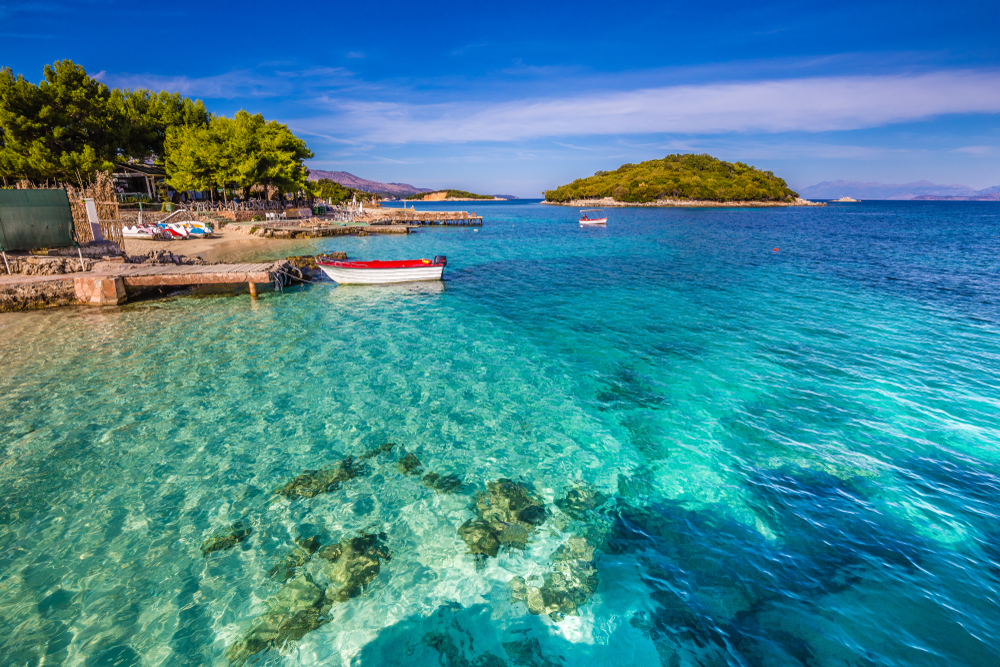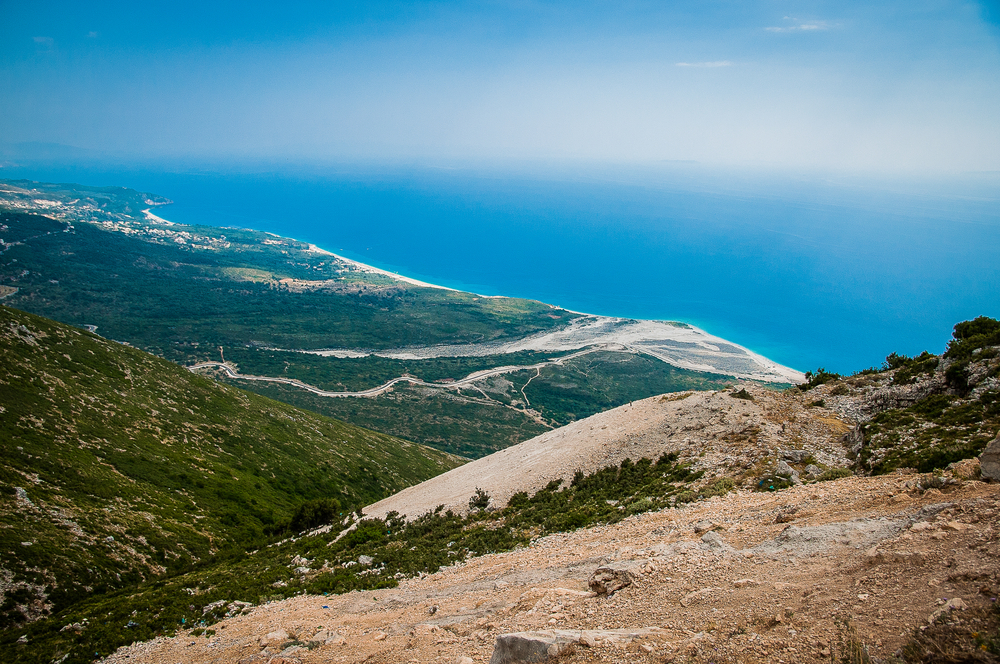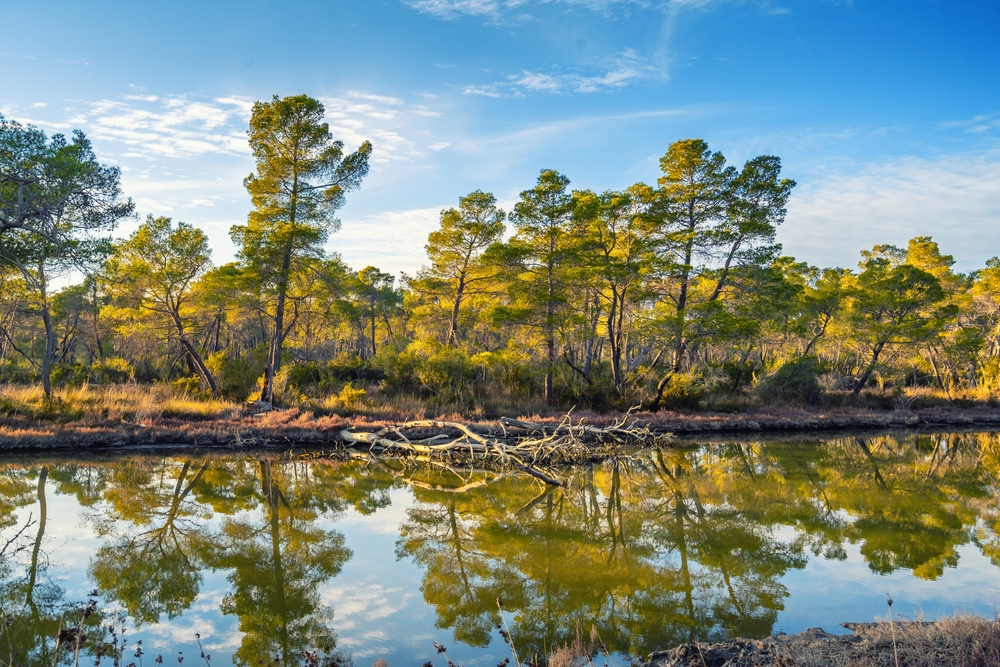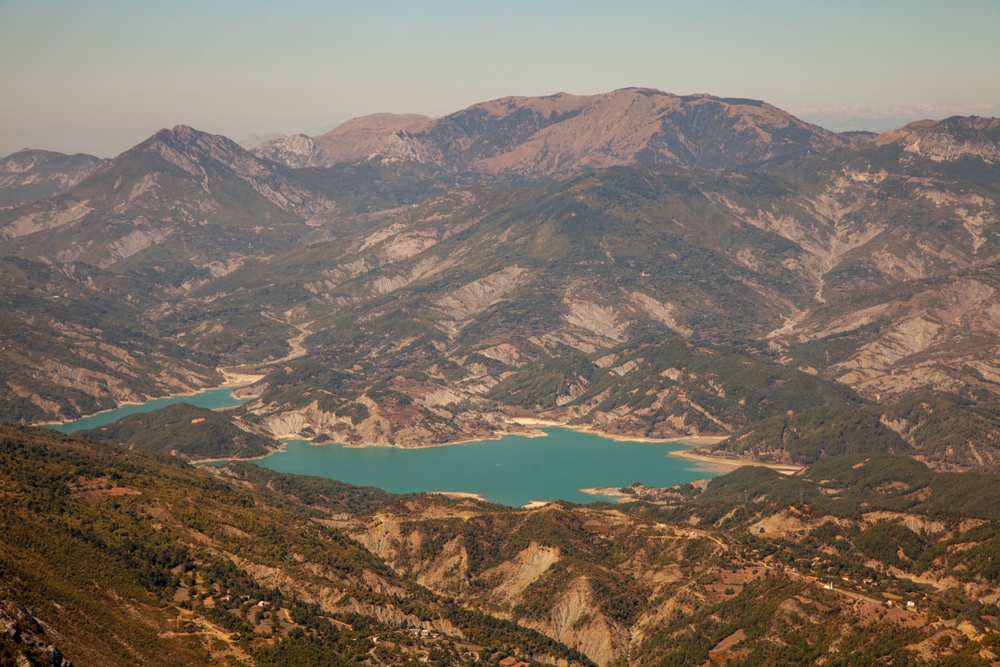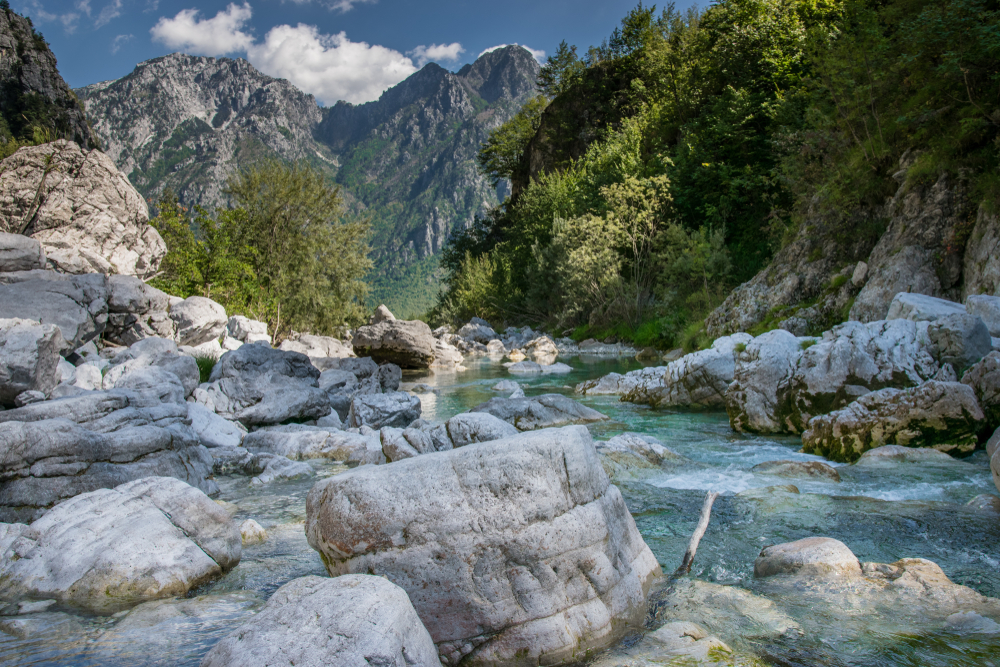Fir of Hotove-Dangelli Overview
Fir of Hotovë-Dangelli National Park, locally known as “Parku Kombëtar Bredhi i Hotovës-Dangëllisë,” is one of Albania’s most stunning protected areas, often referred to as the “Natural Oxygen Factory” of the country.
Located in the southeastern region of Albania, near the towns of Përmet and Frashër, the park spans approximately 34.36 square miles (89 square kilometers). Nestled in the Vjosa River Valley, it serves as a vital ecological haven and showcases some of the country’s most pristine landscapes and rich biodiversity.
The park is renowned for its diverse terrain, featuring rugged mountains, lush valleys, and dense forests dominated by the Balkan fir tree, known locally as “Bredhi i Ballkanit.” The park’s namesake, the Fir of Hotovë, is a signature feature, creating an enchanting, almost otherworldly atmosphere.
The terrain also includes rocky cliffs, gorges, and the tranquil Langarica Canyon, where visitors can witness geothermal hot springs bubbling alongside the Langarica River. The Dangëllisë Plateau further enriches the park’s landscape, offering sweeping views of the surrounding valleys and mountains. Wildflowers and aromatic shrubs dot the undergrowth, adding color and fragrance to the already picturesque environment.
Wildlife in Fir of Hotovë-Dangelli National Park is diverse and abundant, offering visitors the chance to encounter a variety of species. Among the mammals, the park is home to elusive creatures like the Balkan lynx, brown bears, wild boars, and roe deer.
Bird enthusiasts will find plenty to admire, as the park is a sanctuary for several bird species, including the golden eagle, peregrine falcon, and Eurasian hoopoe. The rivers and streams support amphibians and reptiles, adding another layer of ecological richness to the area.
One of the park’s most popular features is the Langarica Canyon and its adjacent thermal springs, where visitors can enjoy the soothing warm waters while surrounded by dramatic rock formations. The historic village of Frashër, located nearby, is another highlight, offering insights into Albania’s cultural heritage and traditional architecture.
Hiking trails crisscross the park, providing access to its most scenic areas, including routes that lead to panoramic viewpoints and secluded spots perfect for picnics or nature observation.
Visitors can experience Fir of Hotovë-Dangelli National Park through hiking, wildlife spotting, and immersing themselves in the natural hot springs. The area is also a favorite for eco-tourists, photographers, and adventurers seeking unspoiled nature. Local guides often provide tours that combine exploration of the park with cultural experiences in nearby villages.
The park faces conservation challenges, including threats from illegal logging, habitat degradation, and limited resources for monitoring and enforcement. However, there have been significant conservation successes, particularly in raising awareness about the park’s importance and implementing protective measures. Efforts by local authorities and environmental organizations have focused on sustainable tourism, habitat restoration, and preserving the park’s unique biodiversity.








































































